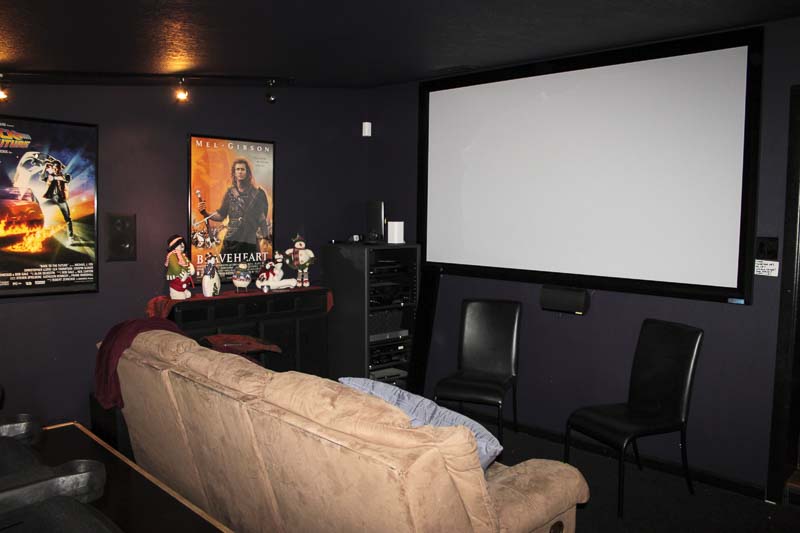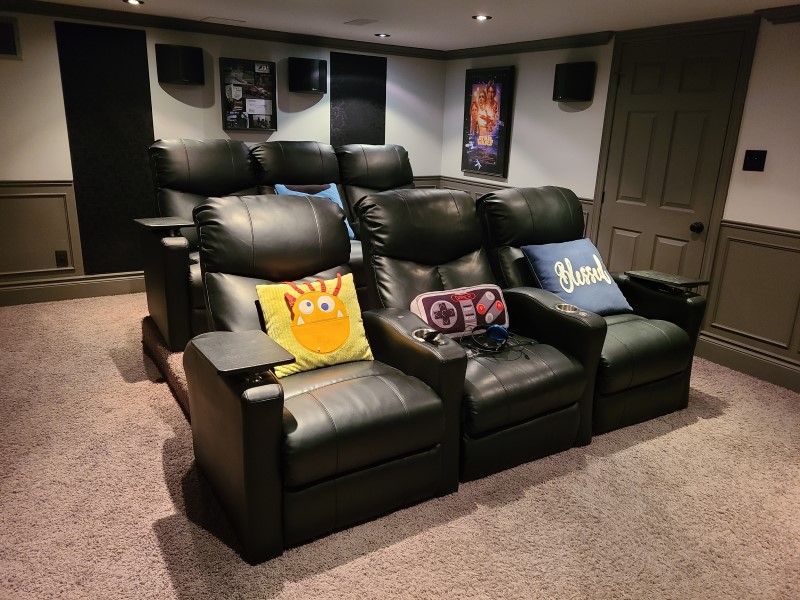Home Theater 101: The Basics
Today, we are starting a new series here on AV Gadgets called Home Theater 101. This came about because I gave blood. As I was, the guy taking my blood started to talk to me about home theater. Already on this site, I’ve written a number of articles based on that conversation. But the gist was that he started off saying he was “into” home theater. Then, as I started speaking and realized that much of what I was saying was going over his head, I started dumbing things down. And then more down. And then even more. It was then that I realized I needed to go back to the beginning. Start with some basic definitions. With that, I offer you this introduction to Home Theater 101: The Basics.
Author’s Note: We’ve already published an extensive AV glossary. If we use a term with which you aren’t familiar, check it out. If it isn’t there, let us know and we’ll add it.
What is a “Home Theater?”

At the core of any discussion about the basics is the question: What is a home theater? You may have some elaborate picture of a home theater. Multiple rows of seats. Massive screen. No visible speakers. Basically a mini-movie theater in your home.
You can define it that way. I don’t.
At AV Gadgets, a “home theater” is more a state of intent. If you are intending to create a more cinematic experience, you are creating a home theater. Many home theaters start as little more than an owner who decided that they want to upgrade the sound from their TV. There is no specific moment that I can point to where that person switches intent. But I bet they can tell you. It is the moment they stop trying to “just make things a little louder” and start trying to recreate the experience of being in a cinema. It’s the moment when they decide they want to know more. The moment they search for more information on the Internet.
At that point, they have already decided to create a home cinema experience. They might not buy gear for another year or more. Doesn’t matter. The purchases are inevitable. They know they will start buying gear. They may even have spreadsheets to help them plan their shopping and start to budget their money. I know I did.
What is a “Home Theater” Display?

Regardless of what you may have read, you don’t have to have a projector to call your room a “home theater.” It isn’t about the type of screen or the display technology. Instead, it is about your field of view. Your field of view is the amount of your vision that is taken up by the display.
We have an article about how to pick the perfect screen size for you. In short, for a home theater, you want your home screen to take up about the same amount of your field of view as the screen at the movie theater. This is greatly affected by personal preferences. While there are professional organizations with specific recommendations, it is better if you figure this out for yourself.
The key is that the display technology isn’t nearly as important as how much of your view the image encompasses. If you are sitting eight feet from an 85″ screen, that equates to about a 40-degree field of view. That would be described as “cinematic” by any home theater enthusiast. Anything larger, and you’d have to start moving your eyes around to see action on the edges of the screen. You’d risk motion sickness and the trouble seeing fast motion. And at 85″ you could have either a projector or a flat panel for about the same price. Which should you get? Depends on your preferences and your room. In short, it isn’t about whether or not your display is a flat panel or a projector. It’s about how close to it you sit.
What are “Home Theater” Speakers?

If I haven’t alienated the home theater elites with the display, this section should do the trick. We all begin our home theater journey at different points. I started when I was in college and traded a friend for four speakers and a surround receiver. For many, that is well ahead of the game. Most start with a soundbar.
You know what? That’s just fine. Is a soundbar “true” home theater? No. Not really. But this is the “basics” of home theater, not the perfect home theater. True home theater starts, in my mind, with surround sound. The minute you have sounds coming from somewhere other than directly in front of you, you have entered the world of home theater. But, again, we all start somewhere. If you have a soundbar and have landed here because you are looking for surround speakers, you are dipping your toe into the home theater pool.
On the other side, you don’t have to be surrounded by tower speakers or completely invisible in-wall speakers to consider your speakers “home theater.” Instead, it is about the number of speakers you have and their positioning. And that number…is a minimum of three.
That’s right, not five. Three.
While some (many) will disagree, three speakers are all you need for a basic home cinema experience. These would, at the minimum, be some sort of soundbar up front and two side surround speakers (on either side of your couch). No, you don’t “need” a center. You don’t “need” dedicated front left and right speakers. And while we love our subwoofers, you don’t technically need one for the home theater experience. You need some sound coming from the front of the room and a couple of speakers to direct sound around the back of the room.
We agree that dedicated speakers for every position along with dual subwoofers should be the standard. But, if you want to start to experience the cinematic experience at home, this is the minimum number of speakers you’ll need to start.
What is a “Home Theater” Room?

You can call any room of your house a “home theater” but you might not get the reaction you’re expecting. A “true” home theater is a room that is dedicated to nothing else (and there are great reasons for having a dedicated room). No bar at the back. No pool table off to the side. Just a screen, some seats, and a bunch of speakers. That’s a home theater.
Most of us don’t have that.
Instead, we have multipurpose areas. A great room that has a big TV in it. A basement that is an entertainment room with games and workout equipment and a projector. We might have an office with a bunch of speakers. All of that is okay. There is nothing wrong with using your space for more than one thing. Just make sure you label it correctly. You have a basement with a cinema area. You have a living room with a theater area. The basic home theater starts off as a room with a couple of extra speakers in it. Rarely does it start off as a dedicated room.
Give it time. You’ll get there.
Conclusion
If you’ve read this inaugural episode of Home Theater 101 and thought, “Hey, what about the equipment? I know he said, ‘the basics’ but this is TOO basic.”
I disagree. If we are really going to start a conversation about the basics of home theater, we need a base. And that is defining the minimum we need to start to label our rooms a “theater area” or something similar. Most of us will never have the opportunity to have a “true” home theater. And that’s okay. We all have to start somewhere and we can, if we work together, get a very cinematic experience out of almost any room. Now, let us begin…



3 Speakers, are you nuts !! Just kidding in fact I agree with you. While I have a dedicated HT upstairs, I wanted at least a 5.1 in my living room. After consulting with the crew at AV Rant I decided to use a Denon 1500h and 2 subs I had that were left over from my HT upgrade. The problem was my electrician wanted to cut holes all in my ceiling to run the 2 back surrounds. I ended up just adding 2 outlets in the corners of my living room. I’m using a Sonos Playbar under the TV and 2 Sonos SL’s as surrounds. To be completely honost, I am shocked at how good the sound is in the room. It’s not near as good as my dedicated 7.2.4 , but for a living room set up, it’s more than adequate.
It’s amazing how adding just a little bit of equipment can make such a huge difference. TV speakers are just so horrible. You don’t realize how much better just adding a soundbar can sound.